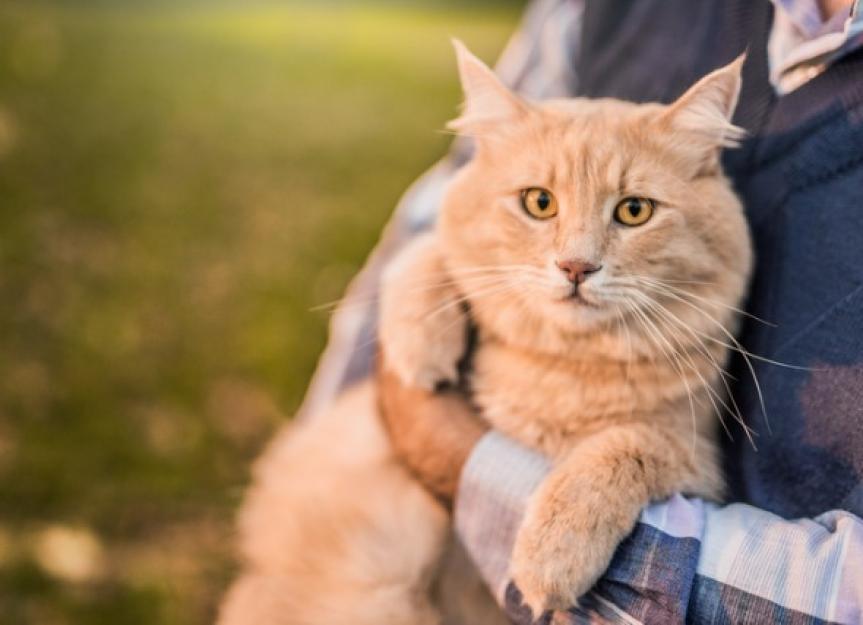What's New in Feline Kidney Disease Treatment
Kidney disease is one of the most common diseases seen in older domestic cats. Fortunately, veterinarians and researchers are hard at work to discover new ways to catch feline kidney disease earlier so they can better treat and manage the condition.
Internal medicine specialistDr. Kelly St. Denis, DVM, DABVP, presented the latest and greatest advances in kidney care at a recentFetch dvm360 veterinary conference. Here are the top five things from her talk that owners of senior cats and cats with kidney disease need to know.
Control the Pain
When you think about kidney disease in cats, pain control is likely not the first thing that comes to mind. However, we now know that cats with kidney disease are in pain, not only from their kidney disease, but also from arthritis.
Arthritis isreallycommon in older cats, and grossly underreported in the pet feline population because cats hide their pain, and owners are unfamiliar with the signs of pain in cats.
Not sure what signs of pain to look for? Here are sometips for identifying the subtle signs of pain in catsand talking with your veterinarian about making sure your cat is pain-free.
Early Intervention is Key
It is important to follow your veterinarian’s recommendations if she suggests starting annual bloodwork to check for signs of hidden feline kidney disease. Most veterinarians will recommend annual bloodwork for cats that are seven years of age and older. There are new blood tests available, like the SDMA (symmetric dimethylarginine) test, that are much more sensitive than the old tests for kidney disease.
SDMA catches changes in how well the kidneys are filtering the blood much earlier than other tests, mainly BUN and creatinine. The old tests, BUN and creatinine, don't show any changes until 70 to 80 percent of kidney function is lost.SDMA can catch changes when only 25 percent of kidney function is lost, giving cats a better chance to respond to treatment. In addition, SDMA is much less affected by dehydration and protein loss than BUN and creatinine.
These new tests allow for earlier detection and intervention with kidney disease in cats.Studiesshow that cats with kidney disease who start receiving therapy early tend to do better, have a better quality of life and live longer.
If your cat’s lab tests come back indicating early kidney disease, it is likely that your veterinarian will recommend a diet change. Some commercialcat foodtends to be high in phosphorus, which is not a good food to feed cats with kidney disease.
You may not have to switch to a therapeutic kidney diet (aka prescription cat food) just yet, however. Sometimes, all that is needed in the beginning is to switch to a high-quality senior diet.
High-quality senior cat diets tend to contain omega-3 fatty acids, antioxidants, L-carnitine, highly bioavailable protein and balanced amino acids, all of which are important ingredients to support an aging body. I always urge pet parents to ask their veterinarian for nutritional information for their pet.
What About Prescription Kidney Diets?
Most savvy cat owners know that their feline needs to eat a high-quality diet rich in protein, but what about cats with kidney disease? The old belief was to restrict protein in cats with kidney disease, but now veterinarians know better.
Feline kidney disease treatment often includes a diet consisting of highly digestible protein that meets or exceeds minimum standards, is restricted in phosphorus, and is high in omega-3 fatty acids.
Prescription cat foodthat focuses on kidney support, such asBlue Natural Kidney and Mobility diet智慧,适合猫的营养需求h kidney disease. The earlier you can transition your cat to a specialized diet for kidney support, the more quickly you can support your cat’s special nutritional needs and maintain quality of life.
Antacids Are Out, Nausea Control Is In
Antacids have long been mainstays of treating symptoms of kidney disease in cats to help with appetite and combat possible ulcers in the stomach. However anew studyfound that cats with kidney disease may not have elevated stomach acidity as compared to healthy cats.
Unless cats have bloody stool or vomit, antacids aren’t really going to help with inappetence or nausea. Most of the time, cats with kidney disease benefit more from centrally acting anti-nausea medications, so talk with your veterinarian about these types of medications.
New Treatment for High Blood Pressure in Cats
Did you know that the kidneys secrete a hormone that regulates blood pressure? Cats that suffer from severe kidney problems tend to have high blood pressure that puts undue stress on internal organs, including the heart, lungs and retinas.
Oftentimes, they will requirekidney medication for cats, like Amlodipine, to lower blood pressure. While Amlodipine is still the mainstay of treatment, sometimes it is not enough to lower blood pressures adequately.
If this is a problem in your cat, ask your veterinarian about a new drug calledSemintra™,它可以帮助血压正常化的猫that aren’t responding well to Amlodipine.
Featured Image: iStock.com/DjelicS
Help us make PetMD better
Was this article helpful?
